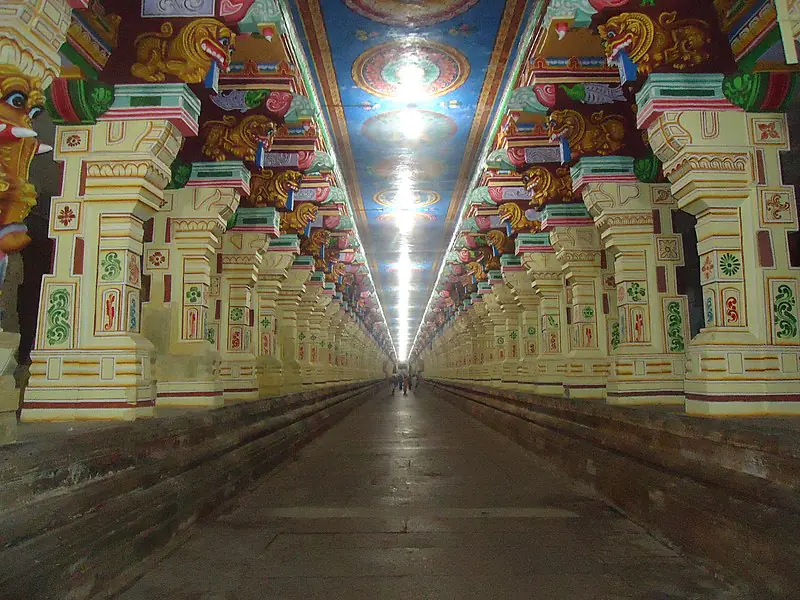The Rameswaram Temple, also known as Sri Ramanathaswamy Temple, is a historic Hindu temple located on the island of Rameswaram in the state of Tamil Nadu, India. The temple is dedicated to Lord Shiva, who is worshipped in the form of Sri Ramanathaswamy, and is considered as one of the most sacred and important temples in Hinduism. The temple is one of the twelve Jyotirlingas, or shrines where Lord Shiva is said to have appeared in the form of light, and it’s also one of the “Char Dham” pilgrimage sites, along with Puri, Dwarka, and Badrinath.
The Rameswaram temple complex is spread over an area of around 15 acres and comprises several smaller shrines, halls, and mandapams. The main attraction of the temple is the main sanctum sanctorum, where the deity of Sri Ramanathaswamy is enshrined has two lingams inside the sanctum. The main diety has been built by Sri Rama from sand which is known as “Ramalingam” and the other lingam was bought by Hanuman from Kailash known as “Vishwalingam”. As per Sri Rama’s instruction, Vishwalingam is worshipped first before worshipping Ramalingam to this day.
The temple is also known for its long corridors, which are lined with thousands of pillars, and its many wells, which are said to have medicinal properties.

Image courtesy: Wikipedia
The history of the Rameswaram Temple dates back to the 12th century AD, when the temple was built by the Pandyan king, Kulasekara Pandian. The temple has undergone several renovations and expansions over the centuries, and the present structure is the result of the reconstruction work done in the 18th century by the Maratha rulers of Thanjavur.
The temple is also known for its daily rituals and ceremonies, which are performed by the priests. Thousands of devotees visit the temple every day to offer prayers and seek blessings from Sri Ramanathaswamy. The temple is also visited by many spiritual seekers and scholars who come to Rameswaram to study the Hindu scriptures and philosophy.
The Rameswaram Temple is not only an important religious site but also an architectural marvel and a significant cultural heritage site. The temple’s rich history, daily rituals and ceremonies, and its status as one of the twelve Jyotirlingas and one of the “Char Dham” pilgrimage sites make it a must-visit destination for anyone interested in Indian culture and religion.
It’s also worth noting that the temple is located on an island and can be accessed by a bridge, and the temple complex is surrounded by many small shops and vendors selling various religious items and souvenirs. It’s advisable to plan accordingly and be prepared for the crowds if you decide to visit the temple. Also, it’s important to follow the dress code and customs of the temple, such as taking a dip in the sea before entering the temple, and the offering of prasad (food offerings) to the deities.